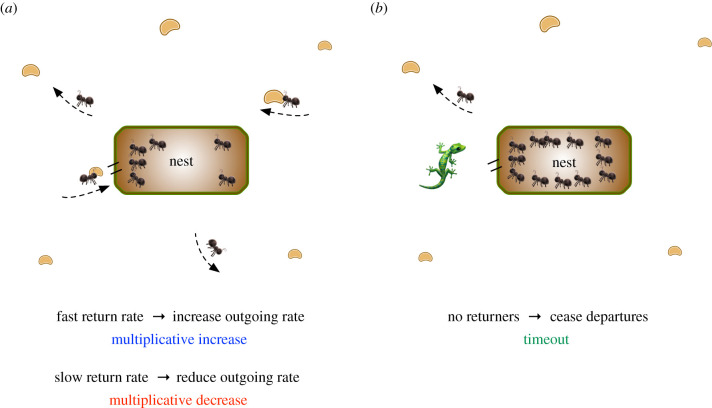Figure 1.
Distributed foraging rates in harvester ants. (a) Foraging ants search for food sources (seeds) in the environment. When a successful forager returns to the nest with a seed, it provides feedback via antennae contact with ants queued at the entrance of the nest. These ants then leave the nest to forage themselves. The sooner foragers return with seeds, the faster outgoing ants leave the nest, and vice versa, in a multiplicative manner. (b) Example of timeout. If foragers do not return to the nest for a long enough time (in this example, 20 min), then a timeout occurs, and no further ants leave the nest. This could be caused, for example, by a predator in the environment.

